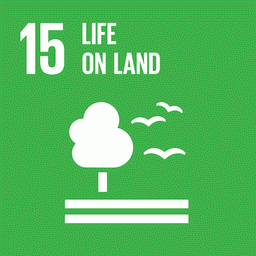Even living completely different paces, people who occupy the urban space, the countryside and the forest have always been connected, according to Matsipaya Txucarramãe, one of the participants of the last event of Amazoniar, which took place on Oct 7th under the theme Indigenous voices: Traditional and urban songs and how they mix. “Although many think otherwise, we are all connected, these three worlds have always walked together. I see that music establishes this connection”, said the musician, who takes forward the indigenous struggle for rights through his compositions.
Txucarramãe said that it is not always easy to sing about the oppression that indigenous communities suffer, but that this artistic expression has helped to carry their message to more people. “I try to approach these themes in a more harmonious and less aggressive way. It is difficult to bring up the indigenous cause and all the violence we have been suffering, but I do it with a lot of love and ancestral conscience. For me it is an honor when my music reaches people and makes them see in a different way the indigenous cause and these projects that want to take away our rights”, he explained.
He highlighted the importance of union between all: The first and most impacted by the destruction of the forest are the indigenous peoples, but the negative effects soon reach people in urban centers. “If we do not join hands and do not occupy the decision-making spaces, there will come a time when there will be no more water and quality food. We are here together to be able “to amazon” our thoughts and reforest these hearts that are always wanting to consume and contaminate what we value so much”, he said.
Collective sense and feminism through maracá
Cíntia Guajajara, teacher and vice-coordinator of the Articulation of Indigenous Women of Maranhão (AMIMA), has also been using a musical instrument, the maracá, to pass on the knowledge of indigenous peoples and contribute to the continuity of their culture. “I have been teaching my students at school the importance of the maracá, I believe it has called and taught the youth to value what is ours”, she highlighted during the last event of Amazoniar.
She said that the maracá is one of the most sacred musical instruments for the indigenous peoples with great spiritual power and beliefs that vary from tribe to tribe. Some believe that its sound reproduces the voice of the spirits, whereas others believe that the instrument has the power to heal or spiritually clean the villages.
Guajajara is one of the main leaders of her people, and has greatly contributed to achievements towards the indigenous women and teachers’ rights. Another topic that she has been sharing with her students is the collective sense of indigenous peoples and the strength that indigenous women represent within their communities. “In our culture, we fight on an equal footing. Collectively, women fight side by side with men, joining forces to strengthen the indigenous movement and organizations. I believe that the school is a space to work on this concept”, she concluded.
Check out the musical performances of Matsipaya Txucarramãe and Cíntia Guajajara in Amazoniar:
Register for the next event of Amazoniar
Next Thursday (Oct 21st), Amazoniar will Amazoniar hold the last event of this cycle of debates, whose theme is “Culture and art of Amazon indigenous peoples as a form of resistance”. On the occasion, Erisvan Guajajara (communicator and founder of Mídia India) and Daiara Tukano (artist, activist, educator and communicator) will guide discussions on the photographic and audiovisual production of artists from indigenous communities, and share their perspectives on cultural productions in the region.
Indigenous perspective: Traditional peoples through the lens of photography and audiovisual
Date: Thursday (Oct 21st)
Time: 8 am (Lima) / 9 am (New York) / 10 am (Brasília) / 3 pm (CET)
Register now
Call for entries to the photo contest Amazoniar is open until Oct 24th
This is the last week to participate in the photo contest Amazoniar. Under the theme “Amazon Forest for the Planet”, it is open to everyone regardless of age and nationality, and aims to encourage the record of realities in the Amazon, as well as the cultural and artistic production in the region.
The panel of judges will select 20 photographs. The winners will have their photos exhibited, in digital format or via projection, in Glasgow, Scotland, during the Conference of the Parties (COP 26) of the UN Framework Convention on Climate Change, and at the Museu do Amanhã, in Rio de Janeiro, next to an exhibition scheduled to open at the end of the year. Check out the rules and submit your photos!
To receive news about Amazoniar, sign up for our newsletter.
